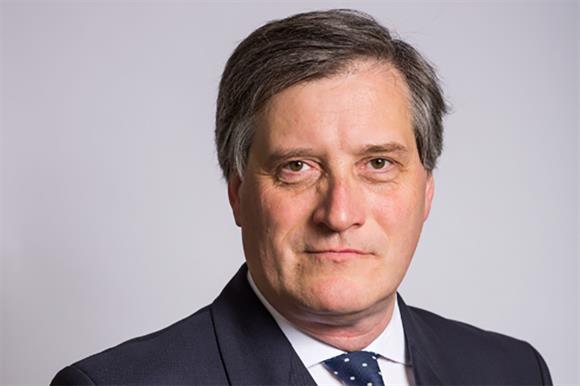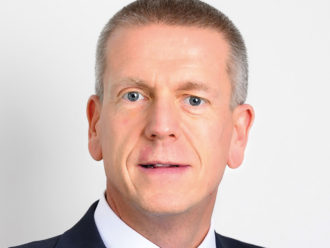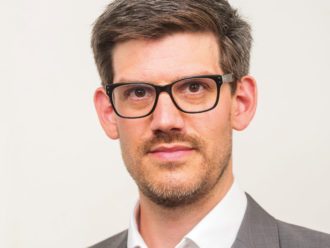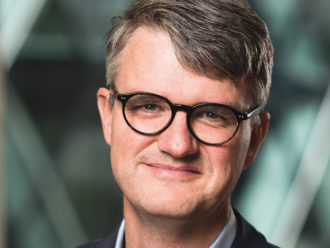What assets are you talking about?
Coming back to people looking at risk, it is to make sure that you have many different asset classes. People are down on hedge funds at the moment because of the low returns, but if they soften volatility, why not?
Also there is absolute return, private equity and property in certain circumstances. We feel that property is fully valued, but it depends what you are buying. In property terms, it is making sure that you buy on a suitable yield and there is security of that yield. Look at infrastructure, where you get a reasonable yield.
I would also look at the bond part of your portfolio. If the duration is seven to eight years or if you are matching the gilt market it could be up to 11 years and bonds finally stop their 30-plus year fall in yields, you are going to be vulnerable. So instead of having a standard bond fund with a standard duration, look for something that has a shorter duration.
We [Psigma Investment Management where Andrew is senior investment director] run two relatively short-dated duration portfolios in credit. If a problem happens we like the idea of having things maturing and paying back during that period rather than trying to trade so our clients can get their money back.
We have a great focus on liquidity and we think that charities should too. Pension funds should have a certain focus on liquidity because the difficulty is that we are used to a market which is pretty liquid, where you can trade. When problems occur you don’t want to end up with a lot of assets that you are stressed over because you cannot move them. The great difficult in these circumstances is that you sell what you can sell.
In a falling market you might find that people sell more FTSE 100 than small caps because that is where the liquidity is. When anyone sells an ETF the manager has to sell the underlying. You could say that there is no reason for a difference in profits.
Actually what will happen is that one will do differently because you can sell it and the other one people won’t be looking to sell because they will not get out of it at the moment. So they won’t sell it.
Prices might be depressed but you won’t get the same volumes going through. So it is an interesting time.
Are smaller pension schemes receiving an adequate service?
I’m not convinced that they are. We, as a discretionary fund manager, are pointing out that there are things that we could help with. Increasingly as you lose defined benefit schemes, fewer and fewer people will have an actuary, but they need people that can asset allocate and who can model risk and volatility. These schemes need looking at concentration risk or just someone to go through where they are and ask: “Do we really know what our liability position is? We are paying X and Y, should we be looking at something more innovative? What are the risks to us? Can we take volatility or do we have a lot of current pensioners?”
If most of your members are not drawing their pension yet arguably you can take more volatility because they will keep paying money in and you can wash it through to your existing pensioners. You also have a longer time horizon. If you have a scheme where member pensions are currently in payment, ether you have locked it into gilts, in which case you are not going to see any great growth, but if you are coming to a bulge in payment you cannot take volatility because you have got to have the cash ready to lock in those payments. All of those decisions you can have with a discretionary fund manager.
There are many debates about costs and transparency at the moment. Do you think that they are a benefit to the industry?
We are very pro transparency. You want to know what the fiscal drag is on your investments, so you want to know how much is going to your investment manager.
The second element is, if you consider your range of options you might start with a Vangard index fund, for example, where you might be paying 5bps. As an active manager you have got to show that you are adding value above that. It might be nice to have someone who says that they are a great stock picker, but you need to evaluate what they are doing.
That concentrates the minds of investment managers in an environment where everyone knows what the costs are. All too often you get headline costs, which look great, but when you look at it you are paying far more.
That is why I feel that ongoing charges figure (OCF) is a better measure than a total expense ratio (TER) or a fund fee, because it is not telling you everything whereas an OCF should have everything including the kitchen sink in it. In which case, anything that is charged under a different heading will not be missed.
For example, sometimes when you get investment funds they have an annual management charge, which does not include marketing costs or various other costs. You think that you are paying 5% but there are other things that are charged to the fund.
That clarity is important and Mifid II should give us that. It has been a long time in coming.
It is good to have a level playing field where we can compare all of our costs on the same basis. I don’t understand why there could be a disadvantage to that. The more you see the more clarity you have, the more informed choice you get. Where’s the problem?




